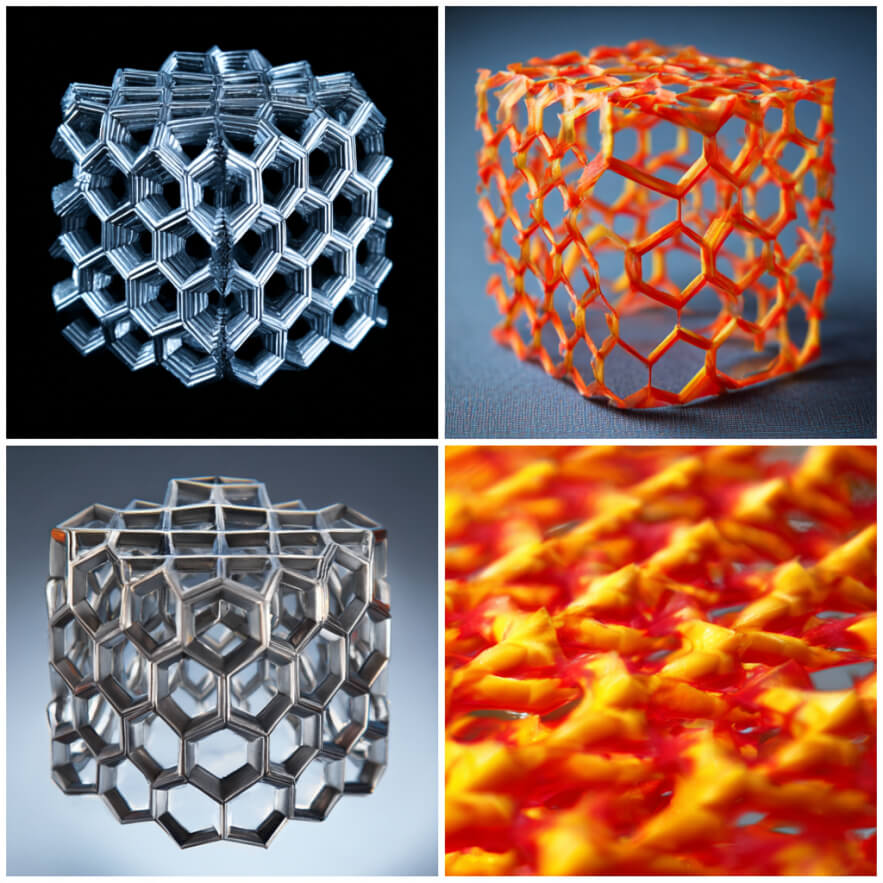Engineers are increasingly turning to materials that behave in ways traditional physics doesn’t predict. These are not just strong or lightweight — they interact with waves, fields, and vibrations, enabling the creation of structures that were previously considered impossible. We’re talking about metamaterials: artificially designed materials whose properties come not from their chemical composition, but from their micro- or nanoscale architecture.
What makes metamaterials unique
Metamaterials are not just a new category of raw materials — they represent an engineering philosophy where physical properties are created by design. Their behavior is determined not by what they are made of, but by how they are structured. Repeating internal patterns control how the material interacts with mechanical, acoustic, or electromagnetic waves. For instance, the same polymer can either block sound or amplify a signal depending on how its internal geometry is configured.
One of the most famous properties is a negative refractive index, which means that light bends in the opposite direction compared to conventional materials. This enables lenses that can focus waves with unprecedented precision. But in practice, metamaterials go far beyond optics: they are used in vibration isolation, smart airplane skins, and more — where materials can respond in real-time to external stress.
The key advantage is that metamaterials don’t require exotic ingredients. They are often made from common polymers, metals, or composites, yet behave in extraordinary ways thanks to their internal layout. This makes them scalable and cost-effective. While the design stage can be computation-heavy, the final product may replace multiple complex systems with a single tailored solution.
Metamaterials reshape construction — just as blockchain reshapes perfumery. Learn more in “Scent in the digital age: how blockchain and IoT are transforming the perfume market”.
Acoustic and vibration-control properties of metastructures
One of the most practical applications of metamaterials is noise and vibration management. Traditional soundproofing relies on mass — the thicker the wall, the better it blocks sound. Metamaterials flip this rule: thin, lightweight layers can effectively block low frequencies that used to require massive barriers of concrete or felt.
This is possible due to localized resonance. Internal cavities and geometries vibrate at specific frequencies, effectively “trapping” and absorbing sound waves. These systems are already in use in railway carriages, elevators, and industrial equipment. For example, a German infrastructure firm introduced lightweight acoustic panels in train cars that absorb rail-induced vibrations without adding significant weight.
The standout feature is tuneability. Conventional systems need a complete overhaul to work with different frequency ranges. With metamaterials, engineers can adjust internal layouts or swap modular components — offering a cost-effective and scalable solution for ever-changing industrial needs.
Optical metamaterials and their role in engineering
Among the most dramatic but still niche types are optical metamaterials, which manipulate electromagnetic waves — including visible light. These materials enable subwavelength focusing, meaning they can “see” objects smaller than the wavelength of light. This is groundbreaking for optics and photonics, with promising applications in medicine, electronics, and aerospace imaging.
For example, superlenses made from metamaterials are already used in biomedicine to image living cells without the need for dyes or probes. These systems outperform traditional optical microscopes, offering resolution comparable to that of electron microscopy. Engineers are also developing adaptive coatings for windows and lenses that can dynamically change reflectivity or absorption depending on lighting conditions.
In aerospace, these materials help create multifunctional shells for satellites and aircraft. Such surfaces can reflect heat, control radiation, and enhance signal directionality — all within a single lightweight layer. Replacing multiple subsystems with one metamaterial-based solution reduces both weight and complexity, making aerospace systems more efficient and robust.
Structural metamaterials and lightweight load-bearing elements
Lightweight but strong materials have always been the holy grail of engineering. Metamaterials offer new options through topology-optimized structures — where internal geometry redistributes load more efficiently. This concept has transformative potential in construction, aviation, robotics, and exoskeleton development.
A standout concept here is the lattice foam architecture, where the internal structure mimics bone or honeycomb forms. These designs combine strength and lightness, absorbing shocks better than conventional solid materials. What’s more, they can be customized: one area of a structure can be made stiffer, while another is designed to absorb energy in a crash scenario.
Innovative companies are already using such elements in real products. Drone manufacturers, for instance, integrate metamaterial beams to boost payload without compromising agility. In civil engineering, bridges are outfitted with energy-absorbing coatings made of latticed metastructures that reduce vibrations from traffic, increasing lifespan without adding structural weight.
Digital design and manufacturing of metastructures
Designing with metamaterials requires precise computational modeling. This goes far beyond regular 3D CAD — involving multi-physics simulations across scales. Engineers use inverse design algorithms, where the desired behavior is defined first, and the system then generates the optimal geometry to achieve it.
Manufacturing such intricate shapes demands precision, which is why 3D printing, especially micro-stereolithography, has become crucial. These techniques build highly detailed lattice structures that traditional methods like casting or extrusion can’t produce. The future of metamaterials depends largely on the progress of additive manufacturing.
Experienced engineers offer a few design tips: include test zones within prototypes to validate behavior under real loads. Some even integrate “sacrificial” sections into the structure — designed to fail in a controlled way and protect critical parts. This doesn’t just make behavior predictable, but also simplifies maintenance and part replacement in high-stress applications.
What to expect from metamaterials in the near future
- Large-scale use in transportation systems, especially electric vehicles and drones
- Biomedical applications: prosthetics, implants, and wearables with adjustable stiffness
- Transition from prototypes to building code-compliant solutions
- Integration into public spaces as “acoustic filters” for noise management
- Adoption in sports gear and advanced protective clothing
Yes, if digital design and 3D printing are available — they reduce weight and improve material performance.
They isolate targeted frequencies with far less bulk compared to conventional materials.
Not necessarily — common polymers and alloys are often used; internal geometry is what makes them special

